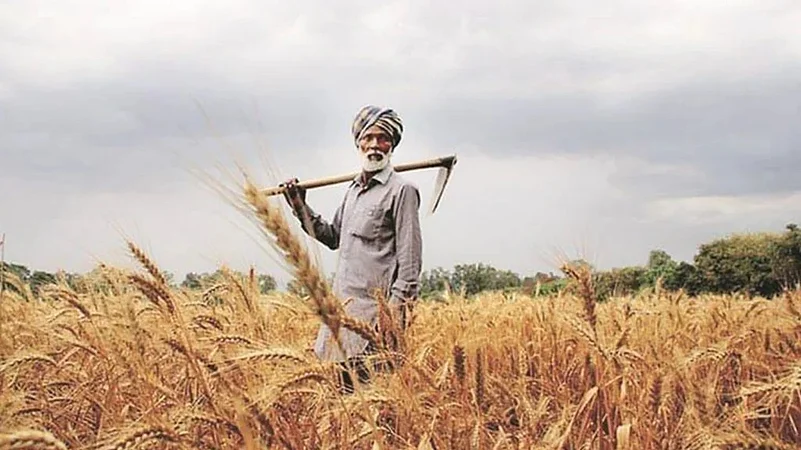In recent times, the agricultural sector in India has faced numerous challenges, from erratic climate patterns to market uncertainties. As a result, a growing number of young people have been leaving farming for urban opportunities, contributing to an exodus from rural areas. However, the Federation of All India Farmer Associations (FAIFA) is optimistic that the ongoing digital revolution in agriculture can stem this tide and rejuvenate the sector.
The FAIFA, representing farmers and farm workers across Andhra Pradesh, Telangana, Karnataka, and Gujarat, has welcomed the government's recent announcement of seven schemes amounting to Rs 14,000 crore. According to FAIFA, these initiatives could be pivotal in curbing the trend of youth migration from agriculture to urban settings. This article explores how these digital advancements can offer a lifeline to the agricultural sector and create a more balanced urban-rural dynamic.
A Technological Lifeline
At the heart of the government's push for digital agriculture is the Digital Agriculture Mission (DAM). This initiative aims to develop an ‘agri stack,’ a comprehensive digital infrastructure encompassing a farmers' registry, village land maps, and crop sown registries. Such a robust digital framework promises to revolutionize the way agricultural data is collected, managed, and utilized.
The creation of a detailed farmers' registry will provide a clearer picture of who is farming, what they are growing, and where they are located. This data can be instrumental in tailoring policies and interventions to meet the specific needs of different regions. For instance, if certain areas are identified as struggling with specific crops due to changing climate conditions, targeted support can be provided to help them adapt.
Addressing Agrarian Distress
One of the most significant issues facing Indian agriculture is agrarian distress, exacerbated by climate change and fluctuating market conditions. For many young farmers, the unpredictability of farming has made the sector seem less viable compared to more stable urban professions. However, FAIFA’s Javare Gowda highlights that the new digital schemes are not merely about technological integration; they are designed to alleviate these very stresses.
FAIFA’s President, Javare Gowda, has emphasized that these new schemes have the potential to reverse the current trend of migration. The prospect of reverse migration, where people move back to rural areas due to improved conditions and opportunities, could lead to more balanced urban-rural development. This shift could alleviate some of the pressures on urban infrastructure and resources, leading to a more sustainable and equitable development model.
Job Creation and Skill Development
The digital revolution in agriculture is not just about technology for technology’s sake; it has significant implications for job creation and skill development. The demand for new skill sets in areas such as data analysis, digital farming tools, and precision agriculture will open up numerous opportunities for the rural youth.
The expectation is that this will lead to the creation of new job roles within the sector itself, as well as in allied fields. By fostering a new generation of tech-savvy agricultural professionals, the sector can benefit from innovative approaches and solutions, further reducing the need for youth to migrate to cities for employment.
A Balanced Urban-Rural Dynamic
One of the more profound impacts of the digital revolution in agriculture could be the potential for reverse migration. As rural areas become more technologically advanced and offer better employment opportunities, the pressure on urban centers could diminish. This could lead to a more balanced distribution of population, easing the strain on infrastructure and resources in cities. Moreover, a thriving agricultural sector can contribute to rural development, improving living standards and creating a more attractive environment for young people to remain in or return to. This shift could help in achieving balanced urban-rural development, a goal that has long been elusive.
The Future of Indian Agriculture
The digital transformation of agriculture is not without its challenges. Ensuring that technological benefits reach all farmers, including smallholders and those in remote areas, will be crucial. There is also the need for ongoing training and support to help farmers adapt to new tools and systems.
However, the potential benefits far outweigh the hurdles. By integrating technology into agriculture, India has the opportunity to create a more resilient, efficient, and attractive sector. The FAIFA's optimism is well-placed, as these advancements could indeed pave the way for a new era in Indian agriculture—one where the sector remains a vital and viable source of employment and growth.
The digital revolution in agriculture represents a significant step forward in addressing the challenges facing the sector. With proper implementation and support, these initiatives could not only help retain the youth in farming but also drive forward a new era of innovation and sustainability in Indian agriculture. As the sector evolves, it will be crucial to continue fostering this digital transformation, ensuring that the benefits reach all corners of the country and contribute to a more balanced and prosperous future.



























